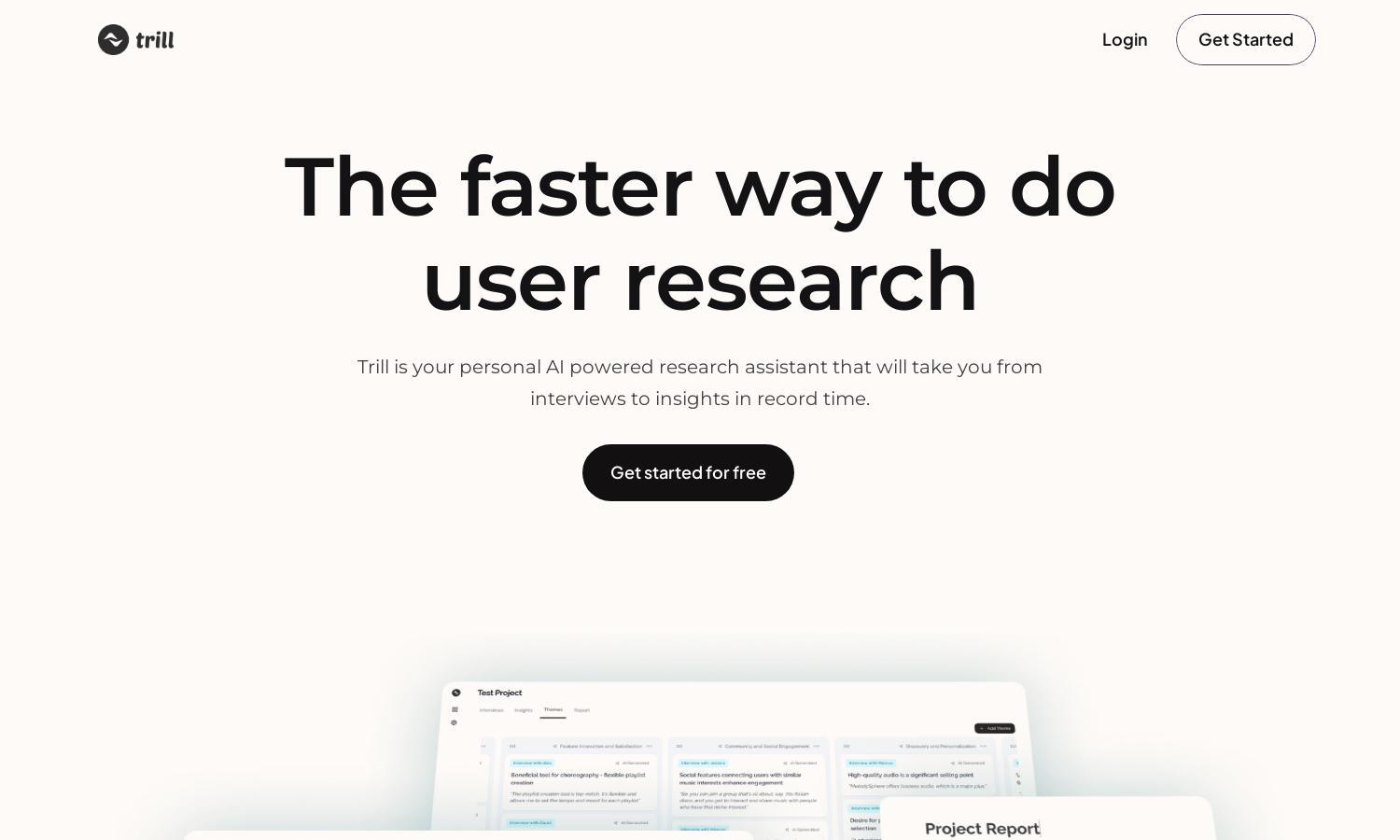Trill

About Trill
Trill is an innovative AI research assistant that transforms how user research is conducted. It analyzes interviews and extracts insights rapidly, making it ideal for researchers and teams who need to make data-driven decisions quickly. With Trill, users can enjoy streamlined workflows and actionable findings.
Trill offers a free public beta for users seeking to enhance their research capabilities. As the platform evolves, users can expect various subscription tiers, designed to cater to different needs, with premium features offering advanced insights and enhanced collaborative tools for research teams.
Trill features a user-friendly interface designed to facilitate efficient navigation and data organization. Its clean layout allows users to seamlessly explore insights, utilize templates, and share findings easily. The intuitive design promotes an efficient research workflow, enhancing the overall user experience.
How Trill works
Users start by onboarding with Trill, where they provide project objectives. Once interviews are conducted, Trill analyzes the transcripts, identifying key insights and common themes. With its intuitive interface, users can navigate seamlessly, organizing their findings into reports and leveraging the insights for deeper analysis.
Key Features for Trill
Instant Insight Generation
Trill’s instant insight generation is a standout feature that streamlines user research. By automatically identifying key themes and observations from interviews, Trill empowers users to quickly pivot from data collection to actionable insights, saving time and enhancing research efficiency.
Effortless Organization and Sharing
Trill offers effortless organization and sharing of research findings, making it easier for teams to collaborate. With a Notion-like editor, users can structure their insights into clear, digestible reports, facilitating communication with stakeholders and improving project outcomes.
AI-Powered Analysis
The AI-powered analysis feature of Trill uniquely distinguishes it in the research space. By automating the coding of transcripts, it enables users to focus on strategic insights rather than manual data processing, enhancing productivity and fostering deeper analytical discussions.








